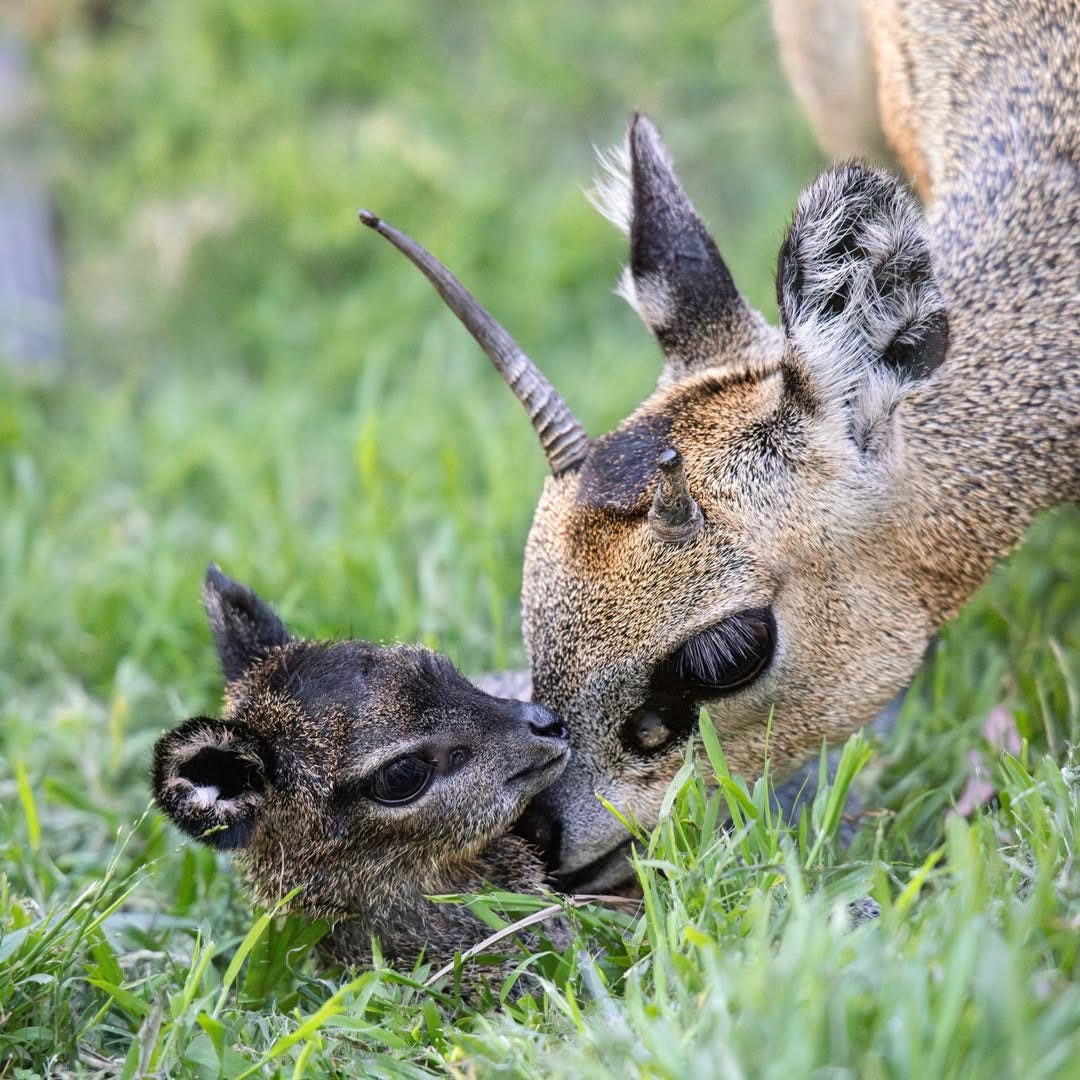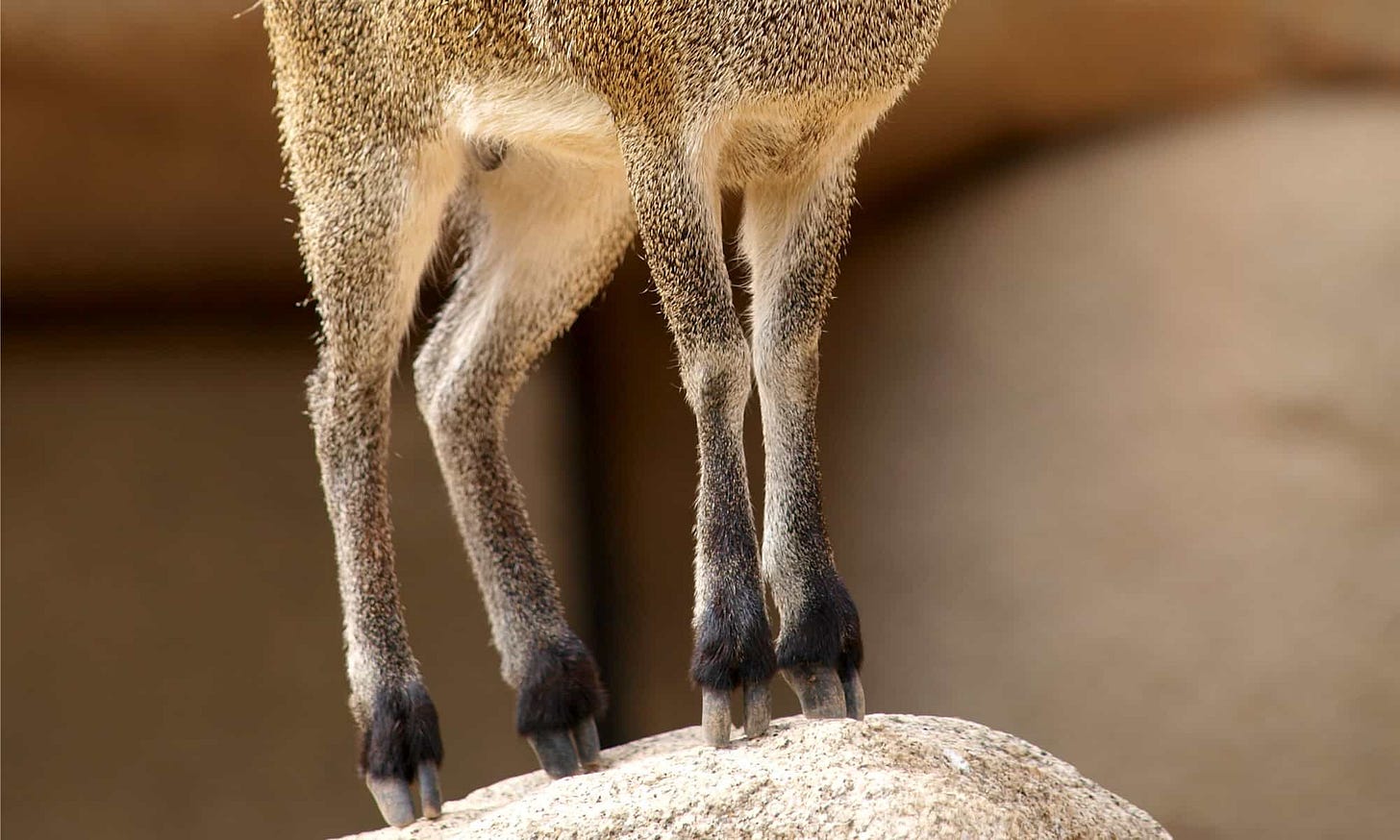At the Oakland Zoo in California, first time klipspringer mom Zeelie gave birth to a female fawn a few weeks ago. Xolani weighed just under 2 pounds at birth, and she’s already confidently exploring her habitat, getting more sure-footed every day, an important skill for small antelopes that inhabit rocky outcroppings.

Klipspringers are found in eastern and southern Africa, in rocky terrain and regions with sparse vegetation. Their name is derived from a Afrikaans word combining rock (klip) and leaper (springer). They are the only antelope species in their family, although as many as 11 subspecies may exist within their branch with differentiations of horn size and fur coloration. They are small (20-24 inches high at the shoulder and weighing 20-40 pounds) but sturdy animals with outstanding leaping and balancing skills. Klipspringers can jump an amazing 10 to 15 feet straight up in the air with ease and their specially-adapted hooves enable them to grip and scramble over rocky surfaces.
Thanks to a rotated joint in their outer digits, the klipspringer walks on the very tips of its hooves, wearing them down into a cylindrical shape. At the center of the hoof is a rubber-like substance, allowing for more “grippiness” over those rocky areas. This gives them the ability to tiptoe around with perfect balance on even the most precarious of edges, sprightly ballerinas of the African crags. And those tiny hooves also allow the klipspringer to land on spaces as small as the face of a silver dollar!

The klipspringer’s tan-to-dark-brown flecked coat provides camouflage, blending in to a rocky backdrop. Their fur is more coarse and thick than that of other antelopes, an adaptation which helps the animal avoid injury from falls. And a hollow hair structure of the fur reflects the summer heat and provides insulation from moisture loss. They are typically nocturnal but they do enjoy basking in the morning sunshine to warm themselves.
Klipspringers are devotedly monogamous, the male establishing a territorial range from anywhere from about 18 to over 100 acres for his mate and offspring, depending on food scarcity as dictated by rainfall. Mated pairs will stick close to each other and will take turns at looking out for predators and they will often stay together until one of them dies. Single, unmated klipspringers and small family groups may form into herds of eight or more others. They mark their territories with sticky secretions from their preorbital glands. Klipspringers eat a diet of plants, fruits and flowers, preferring the more tender young plants and grasses during the wet season. Their water needs are met primarily through their feeding on succulent plants. They will live at heights up to 15,000 feet, migrating to lowlands in times of food scarcity.
Females will have only a single offspring per mating cycle but can breed as frequently as every 16 months. In the wild, parents will keep their offspring hidden in the brush for the first 2-3 months of its life. Lucky for those of us that love sweet little baby things, we get to enjoy a glimpse of klipspringer calf Xolani much sooner than that. She is just too cute!
The source video for today’s gif is from the zoo’s Instagram channel, linked below.
Oakland Zoo website: Klipspringer




Squeeeee!
I always marvel at evolution’s silent process to give living things what they need to survive. Although it took millions of years to fashion the special hooves that allows the klipspringer to master its environment, it did so magnificently through a gradual rotation of the ankle structure, and the formation of the rubbery tips on their hooves. Most humans cannot think in the timescales necessary for this gradual evolution to work, so creationists fall back on some divine bullshit because it is easy not to think.
Live long, and prosper, little klipspringer!
If I build a giant rock garden in my backyard, can I adopt one??